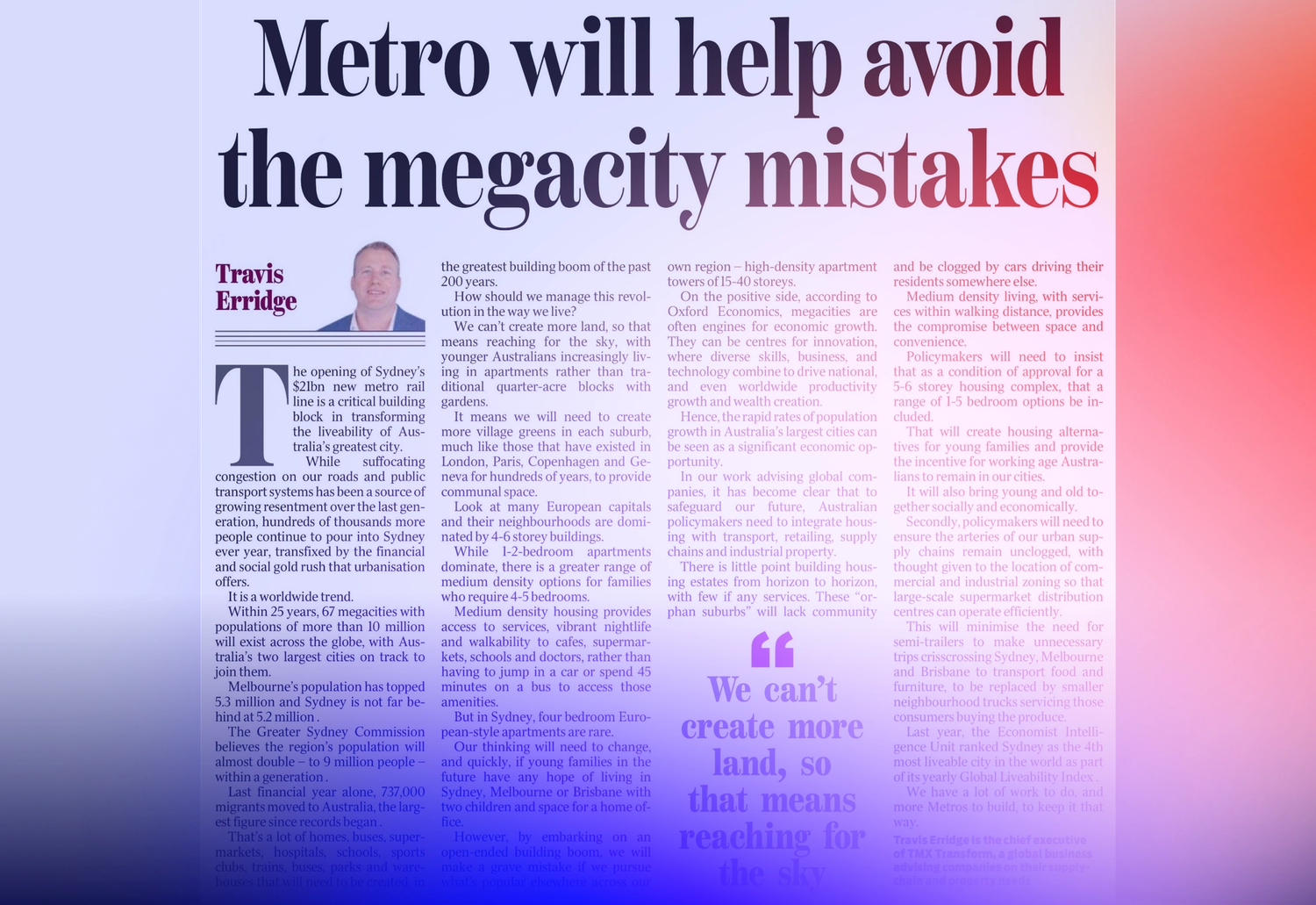Share this post

The opening of Sydney’s $21 billion new metro rail line is a critical building block in transforming the liveability of Australia’s greatest city.
While suffocating congestion on our roads and public transport systems has been a source of growing resentment over the last generation, hundreds of thousands more people continue to pour into Sydney ever year, transfixed by the financial and social gold rush that urbanization offers.
It is a worldwide trend.
Within 25 years, 67 megacities with populations of more than 10 million will exist across the globe with Australia’s two largest cities on track to join them.
Melbourne’s population has topped 5.3 million and Sydney is not far behind at 5.2 million.
The Greater Sydney Commission believes the region’s population will almost double – to 9 million people – within a generation.
Last financial year alone, 737,000 migrants moved to Australia, the largest figure since records began.
That’s a lot of homes, buses, supermarkets, hospitals, schools, sport clubs, trains, parks and warehouses that will need to be created, in the greatest building boom of the past 200 years.
How should we manage this revolution in the way we live?
We can’t create more land, so that means reaching for the sky, with younger Australians increasingly living in apartments rather than the traditional quarter-acre block with gardens.
It means we will need to create more village greens in each suburb, much like those that have existed in London, Paris, Copenhagen and Geneva for hundreds of years, to provide communal space.
Look at many European capitals and their neighbourhoods are dominated by 4-6 story buildings. While 1–2-bedroom apartments dominate, there is a greater range of medium density options for families who require 4-5 bedrooms.
Medium density housing provides access to services, vibrant nightlife and walkability to cafes, supermarkets, schools and doctors, rather than having to jump in a car or spend 45 minutes on a bus to access those amenities.
But in Sydney, four bedroom European-style apartments are rare.
Our thinking will need to change, and quickly, if young families in the future have any hope of living in Sydney, Melbourne or Brisbane with two children and space for a home office.
However, by embarking on an open-ended building boom, we will make a grave mistake if we pursue what’s popular elsewhere across our own region – high-density apartment towers of 15-40 storeys.
On the positive side, according to Oxford Economics, megacities are often engines for economic growth. They can be centers for innovation, where diverse skills, business, and technology combine to drive national, and even worldwide productivity growth and wealth creation.
Hence, the rapid rates of population growth in Australia’s largest cities can be seen as a significant economic opportunity.
In our work advising global companies, it has become clear that to safeguard our future, Australian policy makers need to integrate housing with transport, retailing, supply chains and industrial property.
There is little point building housing estates from horizon to horizon, with few if any services. These "orphan suburbs" will lack community and be clogged by cars driving their residents somewhere else.
Medium density living, with services within walking distance, provides the compromise between space and convenience.
Policy makers will need to insist that as a condition of approval for a 5-6 storey housing complex, that a range of 1-5 bedroom options be included.
That will create housing alternatives for young families and provide the incentive for working age Australians to remain in our cities.
It will also bring young and old together socially and economically.
Secondly, policymakers will need to ensure the arteries of our urban supply chains remain unclogged, with thought given to the location of commercial and industrial zoning so that large-scale supermarket distribution centers can operate efficiently.
This will minimise the need for semi-trailers to make unnecessary trips crisscrossing Sydney, Melbourne, and Brisbane to transport food and furniture, to be replaced by smaller neighborhood trucks servicing those consumers buying the produce.
Last year, the Economist Intelligence Unit ranked Sydney as the 4th most livable city in the world as part of its yearly Global Liveability Index.
We have a lot of work to do, and more Metros to build, to keep it that way.
This article was written by Travis Erridge and originally published in The Daily Telegraph on August 20, 2024.
